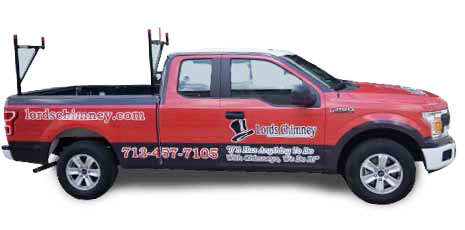Your chimney does more than just decorate your roofline; it protects your entire fireplace system and helps keep you and your family safe. While chimneys are built to last and to withstand the elements, they can deteriorate due to damage, poor construction, or age.
In order to keep your chimney working well and in good condition it is important to be able to spot the signs of masonry damage. By knowing when your chimney is damaged, you can quickly enlist the help of a chimney professional to get it repaired and back in good working condition.
How masonry gets damaged
Masonry is one of the strongest building materials available, which is what allows well-built fireplaces and chimneys to stand the test of time. However, even the most well maintained masonry structures need repairs over time. Below are some of the most common causes of masonry damage, as well as what repairs can fix them.
Water: Water and moisture from rain, ice, and snow can be some of the most damaging forces that affect your chimney. Because bricks are naturally porous, they may absorb small amounts of water. As the water absorbed by the bricks freezes, it expands and creates progressively larger and larger cracks and holes. This freeze-thaw can cause significant damage to the masonry in as little as one year, causing bricks to crack, chip, and spall.
In addition to affecting the bricks and mortar of the chimney, water can affect many other parts of your chimney system. The chimney cap and crown are also particularly susceptible to water damage due to their location; many chimney leaks are caused by damaged chimney caps and crowns. Chimney leaks can lead to damage to the flue and firebox, as well as damage to the walls and ceilings surrounding your chimney.
One of the best ways to prevent water damage is by having your masonry waterproofed. The waterproofing process involves coating bricks and mortar with a specially designed chimney sealant. Made for porous bricks, it keeps water out while still allowing gasses to pass through. Waterproofing products can also be applied to chimneys with existing water damage to slow or stop the deterioration process.
Settling: Over time, all homes are prone to settling. Settling can affect many different parts of your home, including your fireplace and chimney. Masonry fireplaces that are not built on proper bases may become damaged due to settling; this often shows up as cracks in the firebox or chimney.
Chimney or fireplace cracks caused by settling can be repaired using the detailed tuckpointing process. Tuckpointing involves the removal of the existing damaged mortar, replacing it with new mortar that matches the color and consistency of the original. This strengthens the masonry and prevents further damage.
Subpar materials: Sometimes, chimney damage can be caused by the wrong materials. If subpar materials were used in the construction of your fireplace or chimney, it may be more prone to damage. Likewise, mistakes made during installation can also affect your fireplace system. This is often seen in fireplaces or chimneys that are built by general contractors rather than skilled masons.
No matter what is causing your masonry damage, it is important to have it repaired as soon as possible. Contact Lords Chimney today to schedule your masonry repair appointment!


